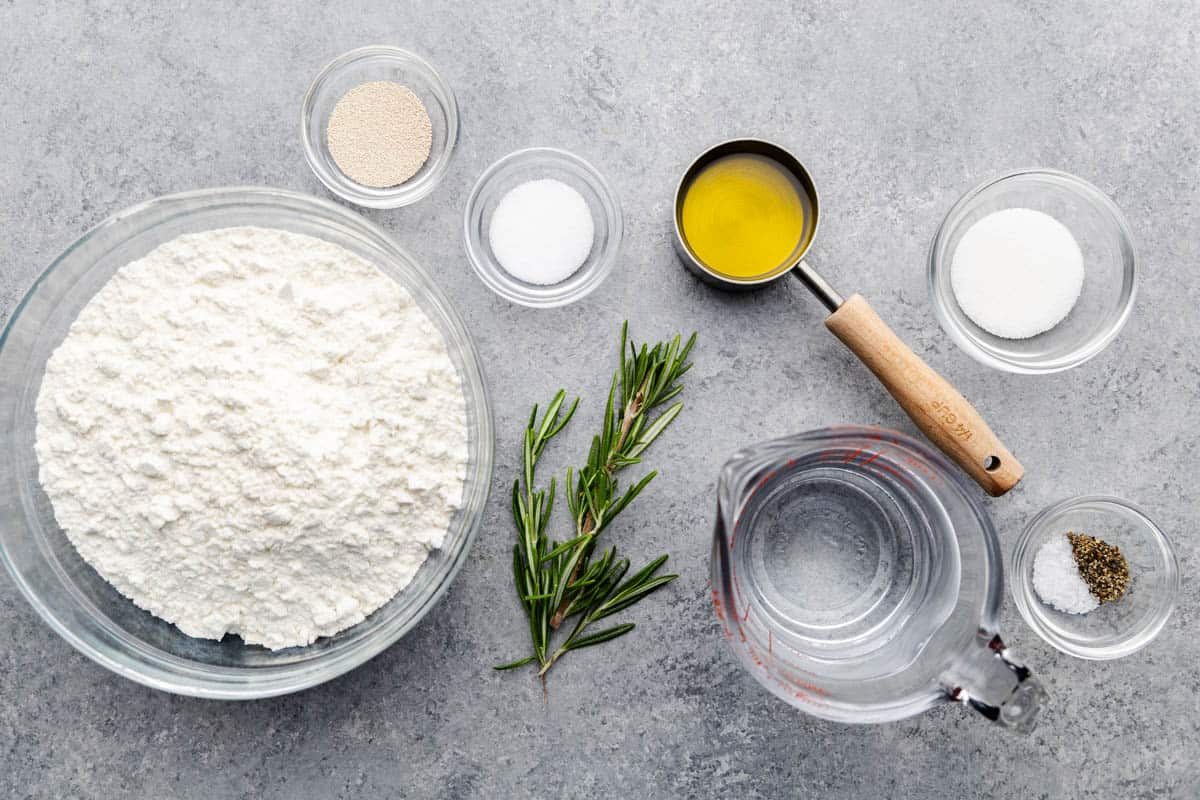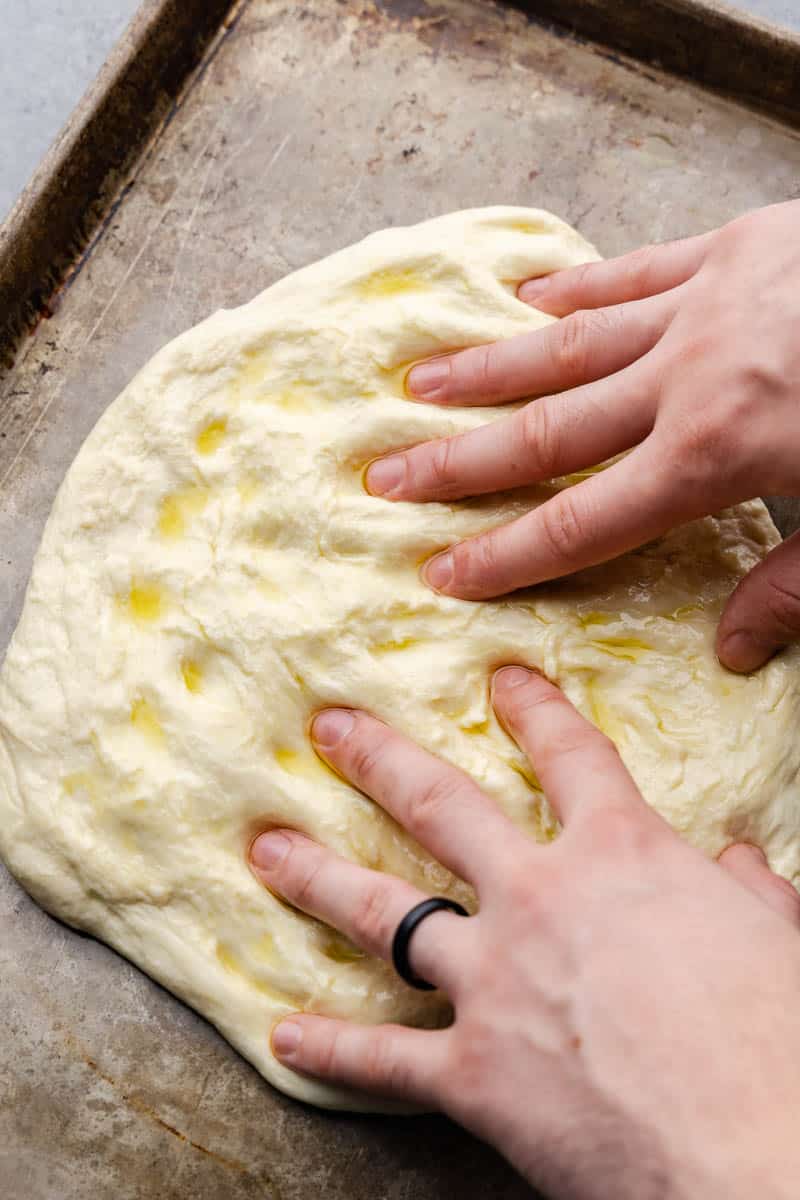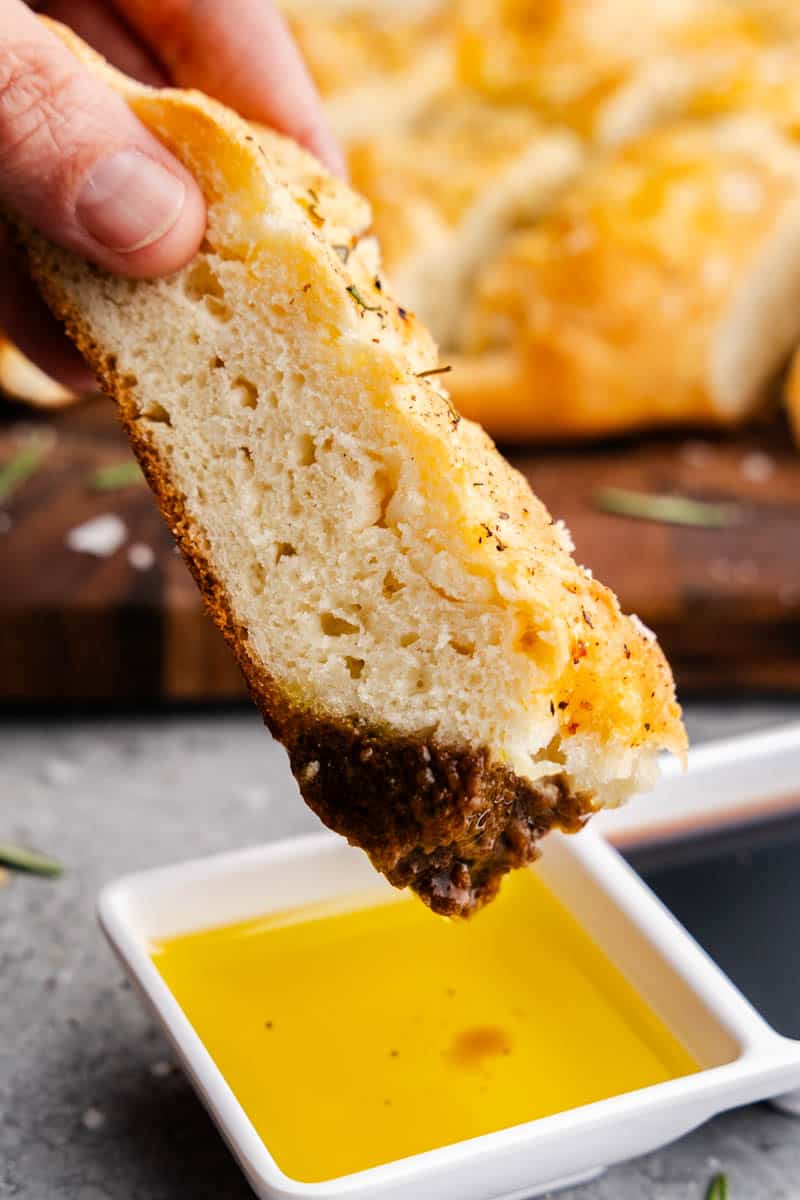If you’ve ever thought homemade focaccia was too fancy to make at home, think again! This recipe is surprisingly easy to make with minimal hands-on time. We’re talking just 10 minutes of actual mixing and shaping time. You don’t even need a stand mixer! The result is a beautifully chewy inside and crispy outside.
This focaccia goes spectacularly with a bowl of potato leek soup, tomato basil soup, or our creamy chicken soup.
Why Our Recipe
- Homemade focaccia is surprisingly easy to make with super minimal hands-on time.
- Perfectly chew on the inside, crispy on the outside.
- Rosemary, salt, and pepper are a classic flavoring, but you can use this base to make other flavors as well.
The classic combination of rosemary, sea salt, and cracked pepper is just the beginning. This versatile base recipe allows you to experiment with a myriad of flavor combinations or even use it to make delicious flatbreads and sandwiches. You can dip it in olive oil and balsamic vinegar, enjoy it plain, or turn it into an absolutely mouth-watering sandwich. Let me tell you right now, this focaccia will quickly become one of those recipes you make again and again and again.
Ingredient Notes

- Warm Water: Make sure the water is between 100-110℉. You don’t have to actually measure the temperature. It should be warm to the touch, but not hot, like a baby’s bath water.
- Instant Dry Yeast: This type of yeast doesn’t have to sit and bloom for 10 minutes, but you can always use active dry yeast too. It will just take a little longer to rise.
- Extra Virgin Olive Oil: You can also use regular olive oil if that’s what you have, but extra virgin has a better flavor
- Sugar: A small amount to feed the yeast and help the dough rise.
- Salt: Essential for flavor.
- All-Purpose Flour: Provides the right texture and structure. You can also use bread flour for an even better texture and crumb.
- Rosemary: Dried rosemary works great, but if you have fresh rosemary, use minced fresh rosemary for an extra burst of flavor.
- Sea Salt: That bigger grain on top is desirable and worth keeping on hand.
- Freshly Ground Pepper: Like the salt, those bigger granules from freshly ground is highly desirable on top. The topping is all about flavor.
Flour Measurements in Bread Making
When it comes to bread making, the amount of flour you add is always an estimate. The actual amount you need can vary due to a variety of factors, including how accurately you measure your ingredients and the humidity in the air. Don’t let that intimidate you though! As long as you know that it is an estimate, you’ll be prepared to go by feel.
You can always add more flour, but you can’t take any away or add more liquids to make up for too much flour. So, add the last portion of flour slowly and gradually. You’re aiming for a dough that is soft and tacky to the touch, but it shouldn’t stick to your fingers or hands.

Making Bread by Hand – No Stand Mixer Required!
Don’t have a stand mixer? No problem! Making breads like this focaccia by hand is easier than you might think. All you need is a large mixing bowl and a sturdy spoon, preferably a wooden spoon. Start by combining your ingredients in the bowl and stirring until the mixture becomes too thick to stir.
Once the dough is too thick to stir, it’s time to knead by hand. Sprinkle a little flour onto a clean counter top and dump the little dough ball you’ve created onto it. Using the heels of your hands, push the dough away from you, then fold it back over itself. Give the dough a little quarter turn and repeat the process. Continue kneading for about 5 minutes until the dough is smooth, elastic, and slightly tacky to the touch, but not sticky. This process helps develop the gluten, giving your bread that perfect chewy texture. It’s a bit of a workout, but it’s also quite therapeutic and relaxing.

Storage Instructions
If by some miracle you have leftover focaccia, store it in a plastic bag or tightly wrapped in plastic wrap at room temperature. It will stay fresh for up to 2 days.
To freeze focaccia, allow it to cool completely after baking. Keep it whole and wrap it tightly in plastic wrap. Then, place the wrapped focaccia in a freezer-safe bag or container. It can be frozen for up to 3 months. When you’re ready to enjoy it, thaw the focaccia at room temperature.

